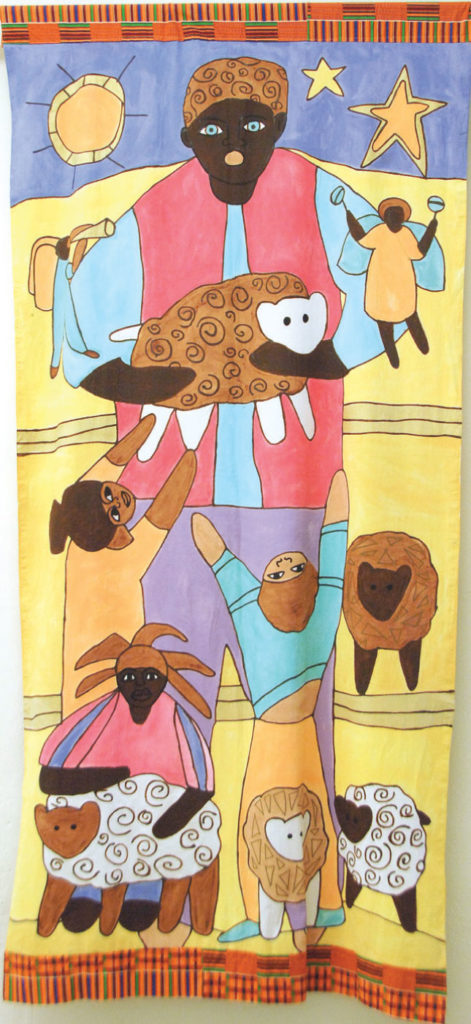
Good shepherds accompany their sheep night and day, spend their lives finding pasture and water, and lay down their lives to protect them if need be. The whole of chapter 10 in John’s gospel uses the image of a good shepherd to explore our relationship as believers with Jesus, who lived out his love for us unto death.
The image of Jesus as the good shepherd is beloved among Christians, one we return to each year in the Sunday gospels of Easter. It’s an image of belonging and intimacy. Shepherds know their sheep, and sheep recognize their shepherds’ voices. Shepherds lead their flocks in and out of sheepfolds by calling them. Sheep will not follow another shepherd’s voice.
The scriptures of Israel frequently use shepherding as an image of God’s care for the people. God is the shepherd of Psalm 23. For early Christians and for us, the shepherd image expresses closeness and intimacy with Jesus. The verses in Sunday’s gospel emphasize the wholehearted love Jesus demonstrates in loving us unto death. Three times the short gospel passage repeats what makes a shepherd good — willingness to lay down one’s life for the sheep.
Jesus is speaking to several Pharisees in this chapter. Like Jesus the Pharisees are teachers of the people in the villages. The Pharisees enter the narrative to check whether the man who received his sight in the previous chapter was really blind.
When Jesus contrasts good shepherds with hired hands, he is asking these teachers to consider which they are. The contrast also asks us which we are.
- What appeals to you about the image of Jesus as the good
- shepherd?
- Who knows your voice? Whose voices do you know and hear?
- Who do you shepherd? For whom are you laying down your life?
John’s gospel invites the Pharisees not only to assess their faithfulness to God’s people but to recognize and affirm Jesus’ divinity. In the Old Testament God is the shepherd of Israel. Identifying Jesus with this image of God expresses his divinity.
Twice in Sunday’s gospel Jesus insists, “I am the good shepherd.” This is one of several I Am statements that links Israel’s God, I Am Who Am, with Jesus. From its first verses John’s gospel identifies Jesus as the pre-existent Word who was with God from the beginning and was God and who became flesh to dwell among us. Jesus is God incarnate. For Jews who don’t believe in Jesus this is blasphemy.
The Christians of the late first century hear in Jesus’ conflicts with the Pharisees tensions in their time with Jews who don’t believe in Jesus. For Christian Jews, faith in Jesus continues faith in Israel’s God. For other Jews, only God is the shepherd of Israel. Until the destruction of the temple in A.D. 70, Jesus’ followers and other Jews worshiped there together. Afterward they slowly grew apart into two religious faiths.
The three verses that follow Sunday’s gospel tell us that the Pharisees who have listened to the parable of the good shepherd are divided in their response (19.19-21). Some insist Jesus has a demon and is crazy. Others are moving toward faith in Jesus.
- What tensions do you experience with people of other religious faiths?

In the Joy of the Gospel, Pope Francis challenges us today to be evangelizing communities, to get “involved by word and deed in people’s daily lives.” Jesus knelt and washed his disciples’ feet, the pope reminds us, and invited his disciples to do the same.
Similarly an evangelizing community “embraces human life, touching the suffering flesh of Christ in others. Evangelizers thus take on the ‘smell of the sheep’ and the sheep are willing to hear their voice.” An evangelizing community stands “by people at every step of the way, no matter how difficult or lengthy this may prove to be” (#24).
- Whose suffering do you and your community touch?
